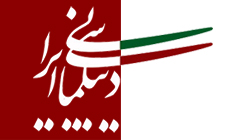The Seventh Art: A Symphony of Identity and Diplomacy

(Image: Scene from About Elly, 2009 movie by Asghar Farhadi)
In the grand tapestry of human interaction, where nations strive to weave their identities into the global consciousness, art emerges as both a brush and a canvas. It transcends the transient bounds of politics and economics, carving its niche as a timeless force of cultural assertion. Each nation, like an artisan, shapes its narrative through a myriad of artistic endeavors—hosting vibrant festivals, orchestrating monumental exhibitions, and nurturing the seventh art: cinema.
Art, in its infinite versatility, serves as a bridge—a structure that defies the constraints of geography, language, and ideology. More than a medium of expression, it is a mirror reflecting the soul of a people, while simultaneously acting as a prism that refracts their essence into myriad hues for the world to see. Films, television series, and animations do not merely entertain; they unite, provoke, and enlighten. In their intricate storytelling lies the alchemy of empathy and the magic of shared human experience.
Iran, an ancient civilization with roots tracing back millennia, stands as a luminary in this artistic odyssey. Its cultural heritage, layered with complexities and contrasts, pulsates through its cinema—cinema that does not merely narrate stories but delves into the labyrinth of the human condition.

Art and Culture: The Dual Wings of Human Aspirations
Art is not merely a product; it is an ethos, a phenomenon. It captures the ephemeral and makes it eternal, connecting minds and spirits in ways that defy convention. In its various forms—whether through the cinematic brilliance of films, the narrative depth of television series, or the ethereal wonder of animation—art reshapes the mundane into the extraordinary.
Cinema, hailed as the seventh art, wields the power of narrative as both weapon and shield. Through it, nations whisper their dreams, shout their struggles, and echo their philosophies. It blurs the lines between architecture and poetry, between music and sculpture, creating a symphony of the senses. Iranian cinema, a confluence of mysticism and realism, has captivated global audiences with its unique aesthetic language. Its films speak of universality through deeply personal lenses—freedom, justice, love, and existential dilemmas take center stage, resonating across borders and ideologies.
Television, with its episodic embrace, offers another canvas for cultural storytelling. Unlike the fleeting cadence of film, it builds slowly, layering emotions and themes over time. This prolonged engagement allows for the exploration of societal intricacies and human dilemmas in greater detail, amplifying its role as a cultural ambassador.
Then there is animation, a medium unbound by the laws of the physical world. It is both art and science, requiring not only creativity but technical mastery. Its universality lies in its visual simplicity, allowing audiences of all ages and backgrounds to engage with its narratives. From whimsical fantasies to profound allegories, animation bridges gap, connects cultures, and fosters a shared sense of wonder.
Iran: A Beacon in the Cultural Milieu
Iran’s contributions to the global artistic panorama are as profound as its history is ancient. A civilization that has survived and thrived over 7,000 years brings with it a legacy too rich to confine to words. Iranian cinema, in particular, stands as a testament to the nation’s resilience, intellect, and creativity.
From the symbolism-laden works of Abbas Kiarostami to the emotionality of Asghar Farhadi, Iranian filmmakers have crafted narratives that echo beyond the screen. Their artistry lies in subtlety—stories unfold gently, yet their impact is seismic. They navigate the complexities of identity, morality, and human connection with an elegance that few can match.
Through this lens, Iranian cinema has transcended the role of cultural preservation to become a tool of cultural diplomacy. At international film festivals, it serves as a silent envoy, carrying messages of universal truths couched in the nuances of Persian identity. This duality—being both deeply rooted and universally relevant—defines its brilliance.
The Seventh Art: A Diplomatic Vanguard
In a world fractured by discord and misunderstanding, art emerges as a healer, a mediator. Cinema, television, and animation are more than entertainment; they are instruments of public diplomacy, capable of bridging divides and fostering connections. By presenting cultural identities in accessible and engaging forms, they invite audiences to see the world through another’s eyes, fostering empathy and mutual respect.
These media operate on both emotional and intellectual levels. They challenge perceptions, provoke thoughts, and inspire dialogue. Through their narratives, they build bridges where there were walls, creating pathways for cultural exchange and understanding.
For a nation like Iran, rich in heritage yet often misunderstood, these artistic forms hold unparalleled potential. They allow the country to project its true image—one of resilience, creativity, and profound depth. Through art, Iran can redefine itself on the global stage, strengthening not just its cultural ties but also its political and social ones.
Conclusion
The seventh art, with its unparalleled ability to narrate, evoke, and transform, holds the keys to a more empathetic world. It is not merely a tool for nations to showcase their culture but a platform to engage in the universal dialogue of humanity. In the hands of visionary creators, cinema, television, and animation transcend their roles as mediums to become movements—movements that inspire, connect, and illuminate.
Iran, with its storied past and artistic prowess, stands poised to lead this movement, reminding the world that art is not just a reflection of humanity but a beacon guiding its future.

